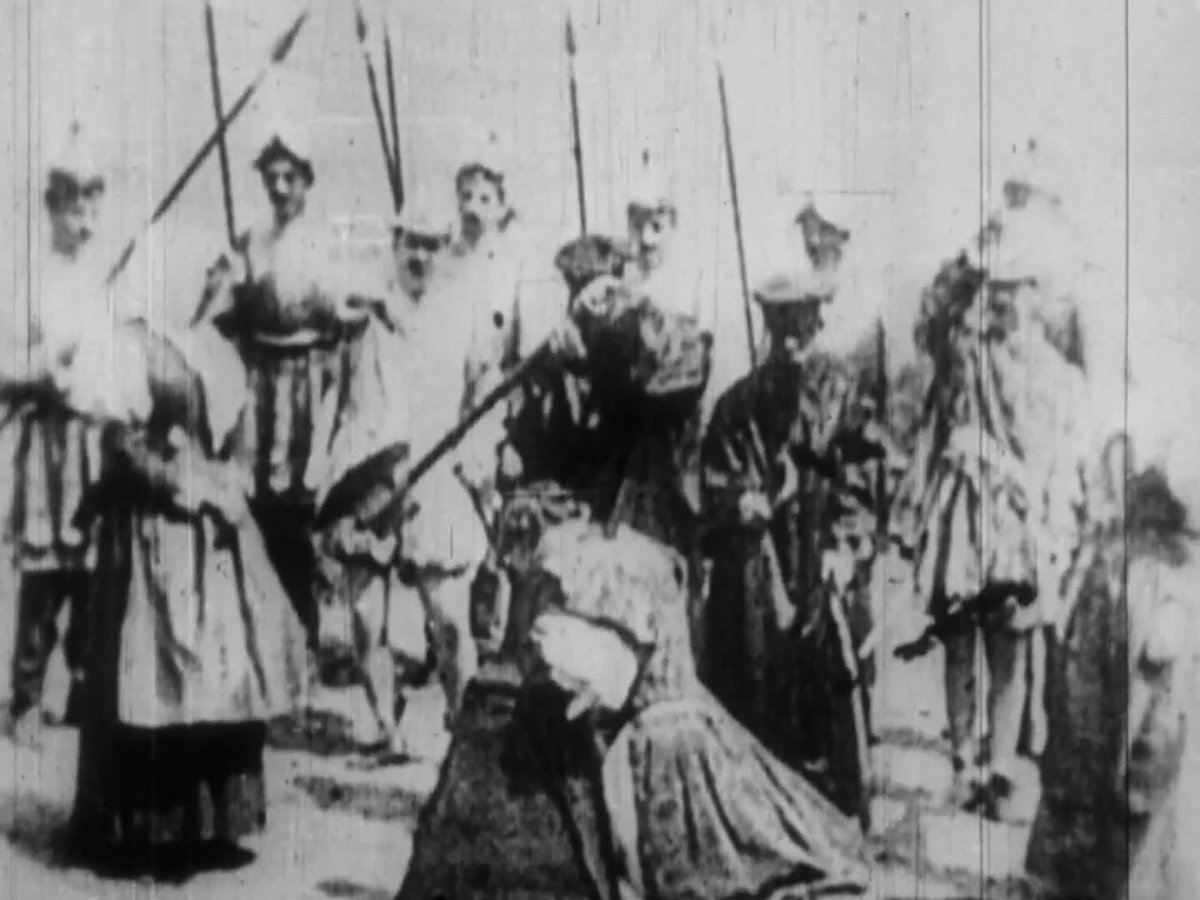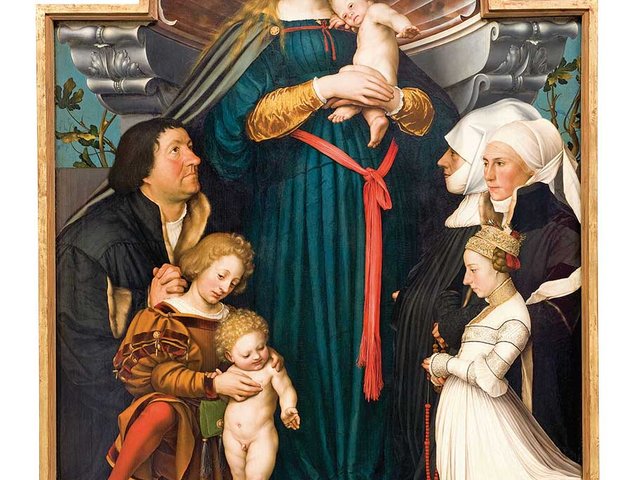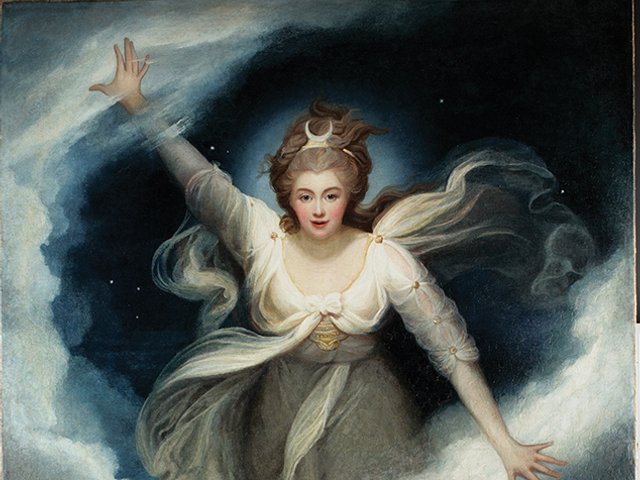This book arose from a collaborative project begun in 2016 and led by Steven J. Reid (history professor at the University of Glasgow) and Anne Dulau Beveridge (curator at the Hunterian, University of Glasgow). This included an exhibition at the Hunterian (2022-23) and a massive open online course hosted by the University of Glasgow, and culminates with this volume of 15 essays in four parts—“Mary in Contemporary Objects”; “Mary in Literature and History”; “Collecting and Displaying Mary”; and “Mary in Media”—with a long introduction by Reid (the volume editor). Throughout, project participants considered public responses to the queen as an integral part of their research, which pursues novel angles on the ways in which Mary has been remembered and represented in museums, galleries and collections as well as by historians, writers, artists, dramatists and film-makers.

A lantern slide from the series Mary Queen of Scots (York & Son, 1885) From the private collection of Stephen McBurney
This is not a book about Mary’s turbulent life—inheriting the Scottish crown in 1542 at six days old, her three marriages and the murder of her second husband, her imprisonment in England for 18 years and execution in 1587 for plotting against her cousin Elizabeth Tudor—but her afterlife, and contributors explore a variety of aspects of this large subject. Early career researchers feature alongside established scholars, and the potential of collaborative scholarship is demonstrated throughout. David Taylor’s chapter is a highlight, exploring why there are so relatively few contemporary likenesses of Mary and providing a definitive survey. Taylor’s chapter works in dialogue with Caroline Rae’s contribution considering the significance of a newly discovered image of Mary, overpainted in 1589 with a portrait of Sir John Maitland, brother of William Maitland, Mary’s secretary of state in Scotland. The image was revealed through X-radiography and infrared reflectography, indicating one way in which the field of evidence may continue to expand.
An inspiration to artists
Recent visual culture is addressed by Daniel Fountain and Alicia Hughes. Their chapter considers the inspiration that Mary’s story has provided for artists including Rachel Maclean in The Queen (2013) and the drag queen and performance artist Rosé in a series of performances (2021). Helen Flockhart’s series of 17 paintings, Linger Awhile (2018), represents key moments in Mary’s life, demonstrating how the queen’s story has continued to be retold with intense symbolism used to reflect on her sexuality and emotional experiences.
There is a strong material dimension to the chapters, arising from a survey of Scottish heritage collections, the British Library and the Royal Collection Trust, identifying nearly 2,000 physical objects. We read about Mary’s death masks, of which three different versions survive, none of which provides a definitive likeness. Similar doubts about authenticity are cast on the relics of Mary’s life and death, including multiple crucifixes across different collections, a surprisingly large number of keys reputed to be connected to Mary’s escape from Lochleven Castle, and “things she might have touched”. The meaning of such objects is considered in thought-provoking terms, with Anna Groundwater discussing the “emotional responses” they evoke for visitors to galleries and museums and for collectors seeking to establish their own connection to Mary. And the commercial significance reaffirms a comment made by the Scottish historian Gordon Donaldson, after publishing his own biography of the queen in 1974, that “there’s money in Mary”.
The survey of collections also revealed almost 8,000 printed texts, a vast body of material addressed here in discussion of Mary’s representation in literary and dramatic forms. Emily Wingfield considers Mary’s book ownership and the verses of dedication that she added to book gifts, demonstrating her personal piety and poetic skill. Mary’s letters are discussed by Jade Scott and Alison Wiggins, who emphasise the continuing evolution of this corpus of material and what it reveals of a “poised and intelligent queen”.
Assessments of Mary’s historians include Antonia Fraser’s ground-breaking biography (1969), regarded by many readers as a definitive account. This is presented as a study that changed both Mary’s and her biographer’s life stories. A consistent thread throughout the whole book is an emphasis on the drama of Mary’s story being the key element in her enduring fascination. This is captured in a chapter on Mary and early cinema and the advertisement for Thomas Edison’s 1913 film, Mary Stuart: “3000 ft. crammed with incident and excitement. Not a dull moment. No padding”.
This book provides a genuinely fresh contribution to Marian studies, not least in the innovation of the approaches taken towards the study of literary and material culture and to Mary’s representations across history. It is critical, scholarly and detailed, as well as being consistently insightful, fulfilling the project’s underlying thesis that “her story is continually repurposed to reflect the society telling it”. It is encouraging to think that the diverse and complicated Mary that emerges might reflect something of our own world and the place that Mary and her Tudor counterparts occupy within it. In June, the French fashion house Dior previewed its “Cruise 25” collection, in part inspired by the needlepoints associated with Mary and the attacks made on her by her detractors. It seems unlikely that the fascination with Mary and her life will disappear, and the approaches taken here provide new directions for the ways in which academics, curators, commentators and artists might continue to think about and present her story.
Steven J. Reid (ed.), The Afterlife of Mary, Queen of Scots, Edinburgh University Press, 400pp, 77 b/w illustrations, £95 (hb), published 30 April
• Janet Dickinson researches the history of the court and elites in early modern Europe. She teaches for the department for continuing education at the University of Oxford and for New York University in London






